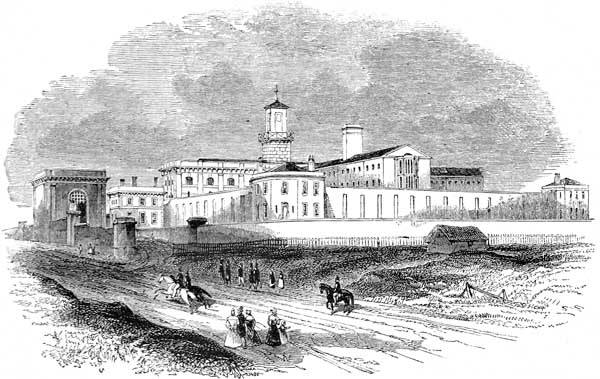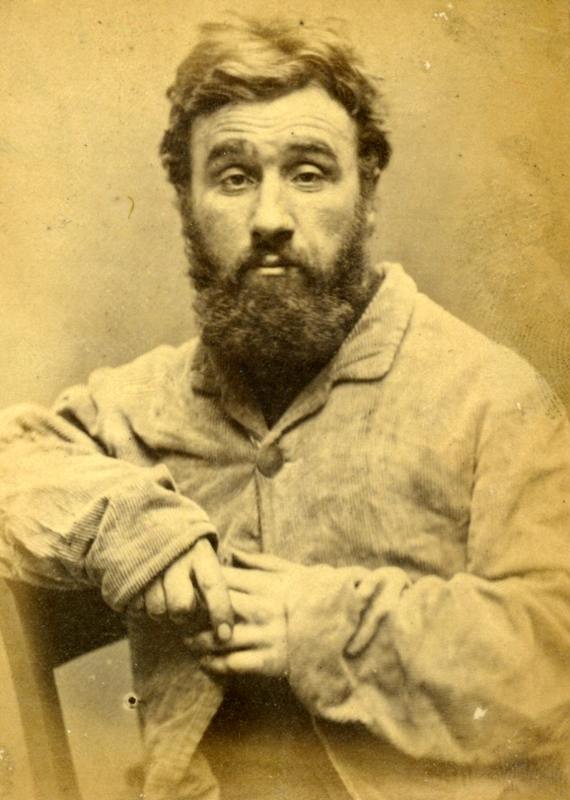If you are tracing your criminal ancestors, criminal records will help you to discover more about any possible misdemeanours of your ancestor.
Working people are often overlooked in historical records, and so criminal records can give into an insight into their daily lives. They can also help you to understand more about crime and punishment in the 1800s.
If your ancestor was found guilty, and depending on the offence, they may have been sent to prison or transported. I have also written an article about prison records and/or transportations.
How Do I Find Out Where A Trial Took Place?
If there is a family myth or legend that has been passed down the generations about any criminal ancestors who may have been arrested for a criminal offence, or your ancestor turns up on the census in a prison, you will want to discover more about the circumstances.
Criminal registers are available on Ancestry and FindmyPast, covering most of the 19th century, and are searchable by name.
Ancestry
Ancestry is great for anyone who does not have the time to, or is unable to, visit Record Offices or Libraries.
It is especially good if you wish to access records from the comfort of your home.
Read my in-depth review to find out more about its features, advantages, and disadvantages.
FindmyPast
FindmyPast is good for anyone, whether they are just starting their family history journey, or have already conducted some research.
It is especially good for people who wish to read newspaper articles.
Read my in-depth review to find out more about its features, advantages and disadvantages.
Another option is to search using the British Newspaper Archive, which is available at the British Newspaper Archive or FindmyPast. Finding information about a trial in a newspaper can be especially enlightening because an article in a newspaper can provide more detail about the trial.
Depending on the severity of your ancestor’s misdemeanour, their trial may have taken place in one of the following courts:
Quarter, Borough and Petty Sessions
These sessions were held every 3 months in all the counties of England and Wales and were before justices of the peace.
A wide range of crimes were tried, such as arson and burglary, at the quarter sessions.
The preliminary hearing of a more serious offence such as murder or manslaughter could have been held at a quarter session but could not actually be tried there.
Borough Sessions were held on the same basis as quarter sessions, but took place in towns and cities.
At a Petty Session the justice of the peace dealt with more minor offences and juvenile offenders. Details of these records can be found at the appropriate Record Office.
Assizes
Assizes, known as the courts of assize, were created in the 16th Century.
Assizes were conducted until 1971, when they were abolished by the Courts Act 1971, being replaced by the Crown Court.
Assizes were held in county towns across the country, being presided over by itinerant judges who travelled from Westminster. England and Wales have been divided into six judicial circuits since the 12th century, these being the areas covered by judges visiting these places.
The judges covered a number of counties and this arrangement was referred to as the ‘circuit’. Murder could only be tried at this hearing and was presided over by the judge and 12 jurors.
When a serious crime came before a quarter session it was referred to the assizes, the defendant being remanded in custody until the next assize session.
Details about Assizes are held at the National Archives. It is helpful to view the page How to Look for Records of Criminals and Convicts. This page not only gives details of records held at the National Archives, but also what other records can be found online.
Palatinate Court
Cheshire, Durham and Lancashire were governed differently to other counties and were known as ‘palatinates’. They had their own courts and cases similar to assizes were held at individual courts. In 1830, the Palatinate Court of Chester was abolished.
A new circuit was incorporated which included Wales and Chester. The Palatinate Courts of Lancashire and Durham were abolished in 1876. These counties then joined assize circuits.
Details regarding these Courts are held at the National Archives.
Old Bailey Sessions
The most important criminal court in England is the Old Bailey Sessions House which, from 1834, was known as the Central Criminal Court. Old Bailey Online has an online index to the proceedings of the Old Bailey from 1674-1913.
Details of trials at the Old Bailey can also be found in the National Archives.
Courts in Wales
Wales was subject to its own laws until 1543 and this included Marcher Law. Marcher Law governed the region bordering England. The main court in Wales, now abolished, was the Court of Great Sessions, and this was established when Wales was incorporated within the English Legal System from 1543.
The court dealt with criminal and civil cases until it was abolished in 1830. There were four circuits for the Welsh Counties. The exception to this being Monmouthshire that was attached to the Oxford Circuit of English assizes. The National Library of Wales holds details of these. After 1830, the English assize system was extended to Wales.
Punishment Records
Punishment Records can give plenty of information about your criminal ancestors.
Transportations of your Criminal Ancestors
Many convicts who would normally have been executed were sentenced to transportation. Transportation of these convicts began in 1620 and these persons were sold to landowners as ‘bond servants’ and sent to America or the West Indies. Convicts transported had to remain with the landowner until their sentence had ended, when they were free to return home.
Most convicts chose to remain in their new country. Transportation to America ceased when, on July 4th 1776, the thirteen American Colonies at war with Great Britain adopted the Declaration of Independence and regarded themselves as independent states.
Between 1776 and 1787 persons sentenced to transportation were held in gaols which became overcrowded and this led to a public outcry so a temporary solution had to be implemented.
Healthy convicts were kept on disused ships that had been moored along the Thames estuary and also at ports along the South Coast. Unhealthy convicts were usually kept on hospital ships. Transportation to New South Wales in Australia began in 1787, ceasing in 1867. During that time over 160000 people were sent to Australia.
If a person was transported, they were subject to a difficult and often perilous journey to the other side of the world, and had little chance of ever returning to Britain.
Little information other than the fact the criminal had been transported, can usually be found in a British Court Record, but the name of the ship they were due to be transported on is sometimes mentioned.
Prison Hulks
You may find that although a sentence of transportation was given out at the trial, criminal ancestors were often sent to prison hulks, which were decommissioned Royal Navy ships anchored in the rivers and ports in the Southeast of England, until they could be transported.
I Cannot Find my Ancestor in Australia
If your ancestor was sentenced to transportation to Australia, and they received a Ticket of Leave, which was a document of parole given out to convicts who had shown they could now be trusted with some freedom, before they were transported, they may have been released before this sentence was carried out.
If you are unable to find any record of your ancestor in Australia, it is prudent to consider that they may never have left Britain.
Information Contained Within a Ticket of Leave
A Ticket of Leave can contain the following information:
- Convict Number
- Name
- Ship on which they were transported to Australia
- Ship’s Captain
- Where they were from
- Their Occupation
- Crimes Committed
- Date and place of the Trial
- Sentence
- Date of birth
- Their Description
- Area they could reside in
- Court ticket was issued by
- Date ticket was issued
- Conditions of the ticket
The information contained within this document can prove useful to anyone wishing to trace their family history.
How Do I Discover More About My Criminal Ancestor’s Journey?
If you know the name of the ship your ancestor was transported on, it is possible that you will be able to discover more about the ship and the journeys that were made.
These records may also help you to find out more about the circumstances on board, and the nature of the journey.
How Do I Find Out About My Ancestor’s Life in Australia?
Many convicts were assigned a trade, and were ordered to work for no pay until they served their sentence. If they received a Ticket of Leave, as mentioned above, they could then work for themselves within an area laid down by the authorities, but had to report to the police regularly.
Once a convict had served their sentence, they were issued with a Certificate of Freedom, which they could use to prove they had served their sentence.
You can search through Australia Convicts Tickets of Leave 1824-1874 on FindmyPast. It is also possible to search through New South Wales Tickets of Leave 1810-1869 on Ancestry.
Decline of Transportation
Transportation declined during the 1850s, partly because the Australians began to resent their country being used to house the criminals Britain wanted to remove.
A sentence of transportation for less than 14 years was replaced by a sentence of penal servitude, which was enacted by the Penal Servitude Act 1853.
Another Penal Servitude Act was enacted in 1857, which abolished transportation, but convicts could still be sentenced to penal servitude overseas, and could therefore be transported to Western Australia, Bermuda or Gibraltar. The last ship landed in Western Australia in 1868.
Prison Records

Few criminals were held for long periods in gaol until the 19th Century. If a serious offence had been committed the offender was either transported or executed for their crime. Vagabonds and vagrants were usually sent to a House of Correction and put to work.
County Gaols were used to hold offenders before their trial. Houses of Correction were used to house offenders who received a short sentence, this normally being a period of hard labour. Houses of Correction and County Gaols were merged in 1823 and then called prisons.

Edward Shevlin, the man mentioned above, was convicted of the offence of stealing a coat. He was 32 years of age, 5 foot 5, had brown hair and blue eyes, and was born in Ireland.
Edward worked as a labourer, and was married at the time of the offence. If you wish to peruse this record, its reference in Tyne and Wear Archives and Museums is TWAS: PR.NC/6/1/1117.
These prisons were regulated by Justices of the Peace in Quarter Sessions, the records being held by local County Record Offices.
Dates of entry and transfer or removal of criminals were recorded in prison registers. The date and place of conviction is also given in the register.
A criminal’s physical appearance was sometimes noted and photos of inmates were often included from 1869. These registers are closed for 100 years.
